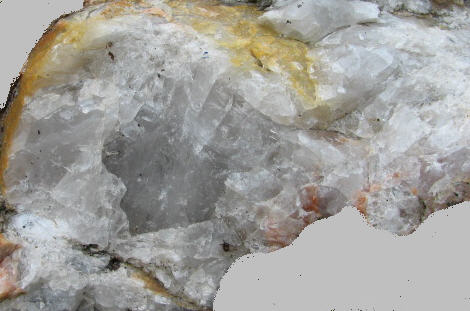To find this earthcache you will need a tape measure capable of measuring at least eight feet.
A word of caution during hunting season. The area is open to hunting. For current dates please check the current year's rules. Small game season starts Sept. 15, rifle deer season starts Nov. 15 through Nov. 30. Please wear orange during the deer rifle season.
Since this is a groomed snowmobile trail this cache will be disabled from Dec. 1st to April 15th. Logs will be allowed during this time period as long as you used a snowmobile to get to this cache. Just like groomed cross county ski trails, we need to respect the use of some trails during their groomed seasons.
As this is a rail to trail and the distance to the waypoint is 0.3 miles from the parking area. I highly recommend that you do not attempt to drive it. It's a narrow trail so turning around could prove to be disastrous as well as trying to back up that distance. The terrain on either side of the trail is of a wetland so enjoy the walk and the scenery and play it safe.
A Pegmatite (peg·ma·tite) is a very coarse grained igneous rock that has a grain size of ½ inch or more. Sometimes they are referred to as an intrusive igneous rock. Such rocks are referred to as pegmatitic. Most pegmatites are composed of quartz, feldspar and mica, in essence a "granite". Usually found as irregular dikes (seams of rock that cut across the host rock), lenses (pods of coarse-grained igneous rock included in other rocks), or veins (masses of rock which occupy fissures in other rocks), pegmatite deposits occur in all parts of the world and are the chief source of commercial feldspar and sheet mica minerals. Pegmatites can be from a few inches to hundreds of feet thick. The largest crystal ever found was in a pegmatite, a spodumene grain over 54 feet long.
Pegmatites are formed from magma bodies deep underground. As the magma body cools, various minerals start to from crystals. As a crystal grows molecules of the same mineral attach themselves to become part of the crystal. Other minerals and the water present is not incorporated in to the crystals. The water becomes concentrated in the molten rock. Consequently, the last, uncrystallized fraction is water rich which makes it possible for the crystals to grow quickly. It is also rich in other elements that also do not like to go into ordinary minerals. Pegmatites are thought to form predominantly in granites during their final stage of solidification.
Pegmatites can be classified as either simple of complex. Simple pegmatites are those that contain the common minerals of quartz, potassium feldspars and mica. Complex pegmatites result from the crystallization of the last gaseous portion of magma which contains a higher concentration of rarer elements. Naturally, the complex pegmatites contain a greater variety of minerals, including rarer ones, and some extremely beautiful specimens can occur. There have been about 550 different minerals found in pegmatites.
Pegmatites are widely distributed in the earth’s crust and are found on all continents. They are most abundant in mountain chains and on stable shield areas like the Canadian Shield. They are typically associated with large granite bodies often distributed along their margins, but are also found within them. They are almost as old as the earth's crust. Pegmatites of Precambrian age (2.8 to 1.0 billion years) are the most abundant and widespread.
Because of the concentration of the rare minerals pegmatites are known for their gemstone deposits. Varieties of beryl (aquamarine, emerald , golden beryl, morganite), spodumene (kunzite, hiddenite) and tourmaline (pink, green and multi-colored elbaite), as well as garnet and topaz are all valued precious stones originating from pegmatites. Don't get your hopes up, this pegmatite does not have any of these precious gem stones in it.
The pegmatite that I have brought you to is in the Archean Southern Complex Gneiss. The Archean refers to part of the Precambrian Time (4.5 billion to 543 million years ago) period in Earth's history. The Archean era was (3.8 to 2.5 billion years ago). The oldest known rocks are from the very beginning of the Archean era, so we are talking about some very old rocks. Gneiss is a metamorphic rock that formed deep under ground as granite was subjected to intense heat and pressure. Uplifting has brought this small dome of Archean Southern Complex Gneiss to the surface. At some point this pegmatite formed.
There are three very visible minerals that make up the bulk of this pegmatite. They are feldspar, quartz and mica. I have outlined these three minerals in the following photos to aid you in your completion of tasks 2, 3 and 4.

Feldspar

Quartz

Mica
This cache will be disabled from Dec. 1st to April 1st as the rail to trail here is groomed for snowmobile use. Logging will be allowed during this time as long as a snow mobile is use to get you to the waypoint. Hunters orange should be worn during rifle deer season which starts Nov. 15th and ends Nov 30th.
Logging requirements of this earthcache are:
Every log must have different photos. Even if several teams or individuals are together for the find. Each and every team and individual must have unique photos.
1.) Measure the width of the pegmatite.
2.) Estimate the percentage of the exposed feldspar.
3.) Estimate the percentage of the exposed quartz.
4.) Estimate the percentage of the exposed mica.
5.) Take a photo of yourself with your GPS with the pegmatite in the background. Post this photo with your log.
Email me the answers to tasks 1 through 4.
A Land Use Permit has been filed with the local DNR office for the placement of this earthcache.